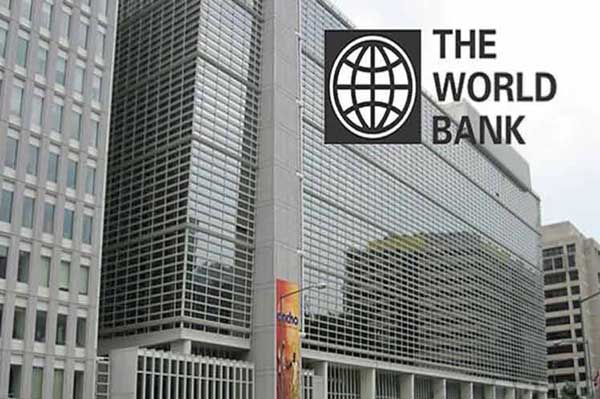Sub-Saharan Africa’s economic outlook remains bleak amid an elusive growth recovery.
According to the latest World Bank Africa’s Pulse report, rising instability, weak growth in the region’s largest economies, and lingering uncertainty in the global economy are dragging down growth prospects in the region.
Economic growth in Sub-Saharan Africa is forecast to decelerate to 2.5% in 2023, from 3.6% in 2022. South Africa’s Gross Domestic Product is expected to only grow by 0.5% in 2023 as energy and transportation bottlenecks continue to bite.
Nigeria and Angola are projected to grow at 2.9% and 1.3% respectively, due to lower international prices and currency pressures affecting oil and non-oil activity. Increased conflict and violence in the region weigh on economic activity, and this rising fragility may be exacerbated by climatic shocks. In Sudan, economic activity is expected to contract by 12% because of the internal conflict which is halting production, destroying human capital, and crippling state capacity.
In per capita terms, growth in Sub-Saharan Africa has not increased since 2015. In fact, the region is projected to contract at an annual average rate per capita of 0.1% over 2015-2025, thus potentially marking a lost decade of growth in the aftermath of the 2014-15 plunge in commodity prices.
“The region’s poorest and most vulnerable people continue to bear the economic brunt of this slowdown, as weak growth translates into slow poverty reduction and poor job growth,” said Andrew Dabalen, World Bank Chief Economist for Africa.
“With up to 12 million young Africans entering the labor market across the region each year, it has never been more urgent for policymakers to transform their economies and deliver growth to people through better jobs.”
Despite the gloomy outlook, there are a few bright spots. Inflation is expected to decline from 9.3% in 2022 to 7.3% in 2023 and fiscal balances are improving in African countries that are pursuing prudent and coordinated macroeconomic policies. In 2023, the Eastern African community (EAC) is expected to grow by 4.9% while the West African Economic and Monetary Union (WAEMU) is set to grow by 5.1%.
However, debt distress remains widespread with 21 countries at high risk of external debt distress or in debt distress as of June 2023.
Overall, current growth rates in the region are inadequate to create enough high-quality jobs to meet increases in the working-age population. Current growth patterns generate only three million formal jobs annually, thus leaving many young people underemployed and engaged in casual, piecemeal, and unstable work that does not make full use of their skills. Creating job opportunities for the youth will drive inclusive growth and turn the continent’s demographic wealth into an economic dividend.
“The urgency of the jobs challenge in Sub-Saharan Africa is underscored by the huge opportunity from demographic transitions that we have seen in other regions,” said Nicholas Woolley, World Bank Economist and contributor to the report. “This will require an ecosystem that facilitates private-sector development and firm growth, as well as skill development that matches business demand.”
The development of labor-intensive manufacturing seems to be missing in Africa, limiting further effects for the indirect job creation in support services and international trade. This may be partly due to a lack of capital, which continues to hamper the structural transformation required for good quality jobs.
While the region contributes 12% of the global working age population, Sub-Saharan Africa owns only 2% of the global capital stock. This means people have fewer assets with which to be productive in Sub-Saharan Africa, compared to other regions.
The report identifies a set of policies to overcome hurdles and unleash job creation in Sub-Saharan Africa, including:
1. Cost-effective private sector reforms, focused on increasing competition, uniform policy enforcement across firm sizes, and regulatory alignment with regional trading partners. Governments can also help identify and support early-stage growth of businesses through more inclusive procurement practices and promotion of local businesses abroad.
2. Investment in education is necessary to boost semi-skilled occupations for the region. Interventions that improve learning in school are more effective than those increasing school attendance alone, while vocational education can be useful for addressing the underemployed and those who have missed out on education as children.
3. Education of girls and access to jobs for women can reduce potential productivity loss from the misallocation of female labor. Cash transfers have proven effective in increasing girls' school enrollment and attendance, as well as in curbing pregnancies among school-age girls.
Latest Stories
-
It was a very physical game – Ogum on Berekum Chelsea clash
19 minutes -
We have failed to implement adequate measures to effectively tackle galamsey— Daryl Bosu
23 minutes -
IMF commences 4th review of Ghana’s bailout programme
55 minutes -
Ghana remains important to us ‘no matter what’ – U.S ambassador
60 minutes -
Accra floods: Mahama alarmed as GARID projects delay
1 hour -
Teddy Osei of Osibisa fame to be honored with state funeral on April 4
1 hour -
We will begin geotagging and geofencing of excavators from ports – Armah Buah
1 hour -
Kuami Eugene to donate revenue from his rendition of ‘Awoo Mawugné’ to Omar B’s family
2 hours -
IMCC convenes decentralisation sector working group meeting
2 hours -
TGMA Errors and Omissions: Kuami Eugene added as songwriter of Okyeame Kwame’s ‘No Competition’
2 hours -
Regard illegal miners as ‘dangerous terrorists’ – Kofi Buah
2 hours -
GPL 2024/25: ‘Title race not over’ – Heart of Lions boss Bashir Hayford
2 hours -
Youth unemployment fuels illegal mining – Small-Scale Miners Association
2 hours -
44% of Ghanaians say galamsey fight has seen no change under Mahama
2 hours -
Chief Supt. Dr Sarah Aba-Afari appointed as Madina Divisional Commander
3 hours

